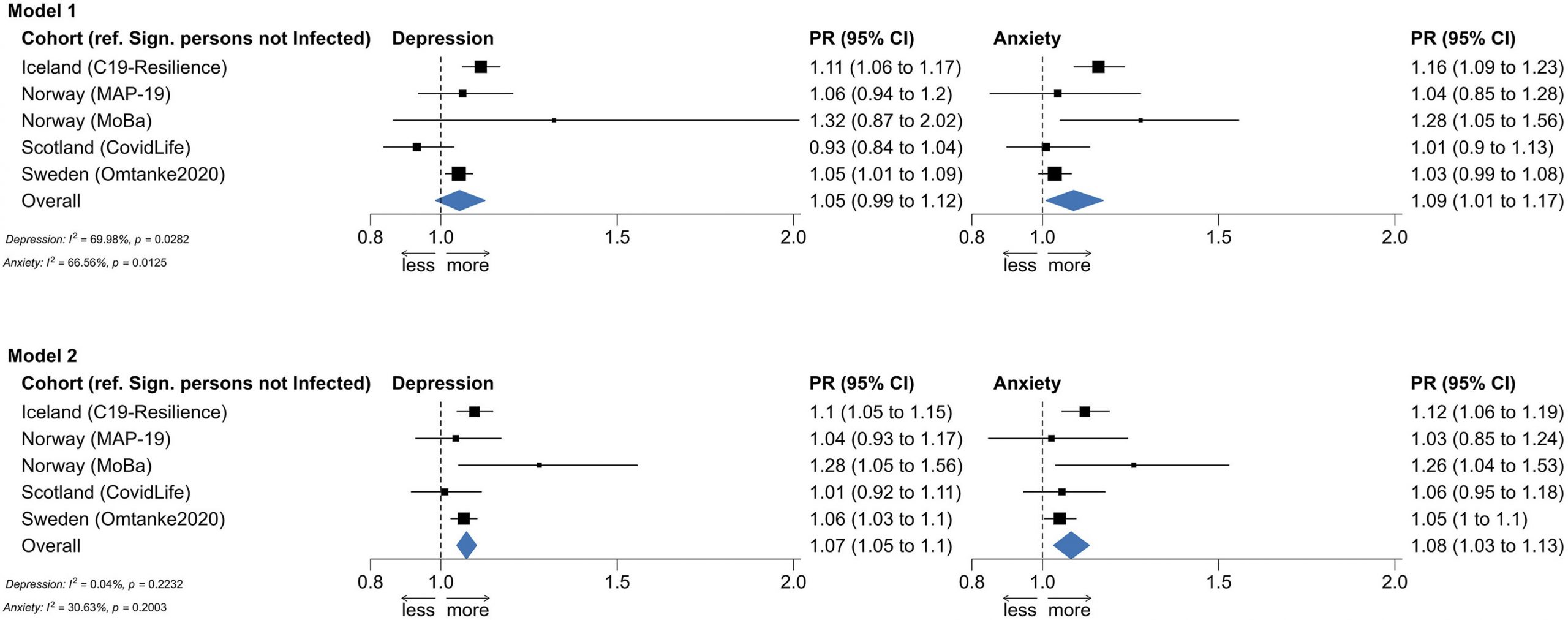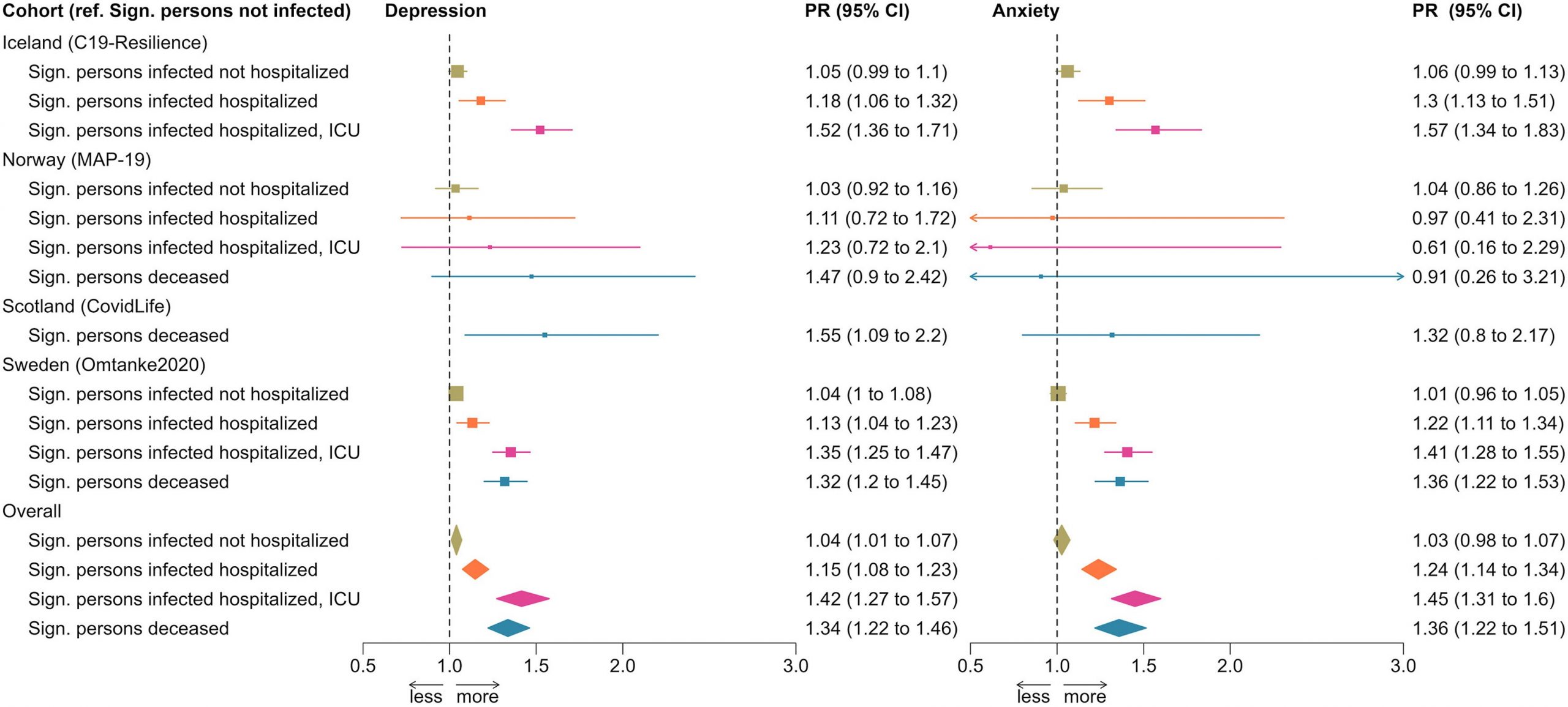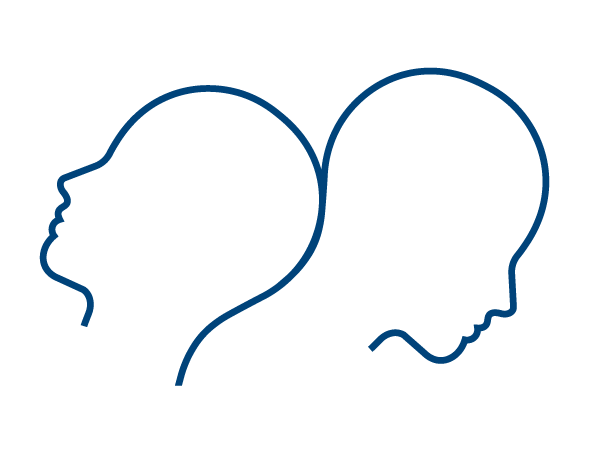Elevated symptoms of depression and anxiety among family members and friends of critically ill COVID-19 patients
About This Project
Elevated symptoms of depression and anxiety among family members and friends of critically ill COVID-19 patients: an observational study of five cohorts across four countries
The Lancet Regional Health–Europe, doi:10.1016/j.lanepe.2023.100733
INTRODUCTION. The substantial mental health impact of the COVID-19 pandemic has been well documented, especially for individuals directly exposed to the disease (i.e., patients with COVID-19). Little is known regarding the mental health impact of having a significant person (family member and/or close friend) with COVID-19 of different severity.
METHODS. The study included five prospective cohorts from four countries (Iceland, Norway, Sweden, and the UK) with self-reported data on COVID-19 and symptoms of depression and anxiety during March 2020-March 2022. We calculated the prevalence ratio (PR) of depressive and anxiety symptoms in relation to having a significant person with COVID-19, and by disease severity of the significant person. We also performed a longitudinal analysis in the Swedish cohort to describe temporal patterns.
RESULTS. 162 237 and 168 783 individuals were included in the analysis of depression and anxiety, respectively, of whom 24 718 and 27 003 (around 15-16%) reported a family member or friend with COVID-19. Overall, the PR was 1.07 (95% CI: 1.05-1.10) for depression and 1.08 (95% CI: 1.03-1.13) for anxiety in relation to having a significant person with COVID-19. The respective PRs for depression and anxiety were 1.15 (95% CI: 1.08-1.23) and 1.24 (95% CI: 1.14-1.34) if the patient was hospitalized, 1.42 (95% CI: 1.27-1.57) and 1.45 (95% CI: 1.31-1.60) if the patient was ICU-admitted, and 1.34 (95% CI: 1.22-1.46) and 1.36 (95% CI: 1.22-1.51) if the patient died. Individuals with a significant person who was hospitalized, admitted to ICU, or deceased after COVID-19 infection showed elevated prevalence of depressive and anxiety symptoms during the entire year after the COVID-19 diagnosis of the significant person.


CONCLUSION. Family members and close friends of critically ill COVID-19 patients show persistently elevated prevalence of depressive and anxiety symptoms. These findings motivate enhanced surveillance of family members and close friends of patients suffering severe COVID-19, or the disease of any future pandemics.
– – – –
Link to the press release: https://news.ki.se/increase-in-anxiety-and-depressive-symptoms-observed-when-family-member-or-close-friend-contracts-covid-19
Corresponding author:
Fang Fang
Unit of Integrative Epidemiology, Institute of Environmental Medicine, Karolinska Institutet, Box 210, 171 77, Stockholm,
Sweden

